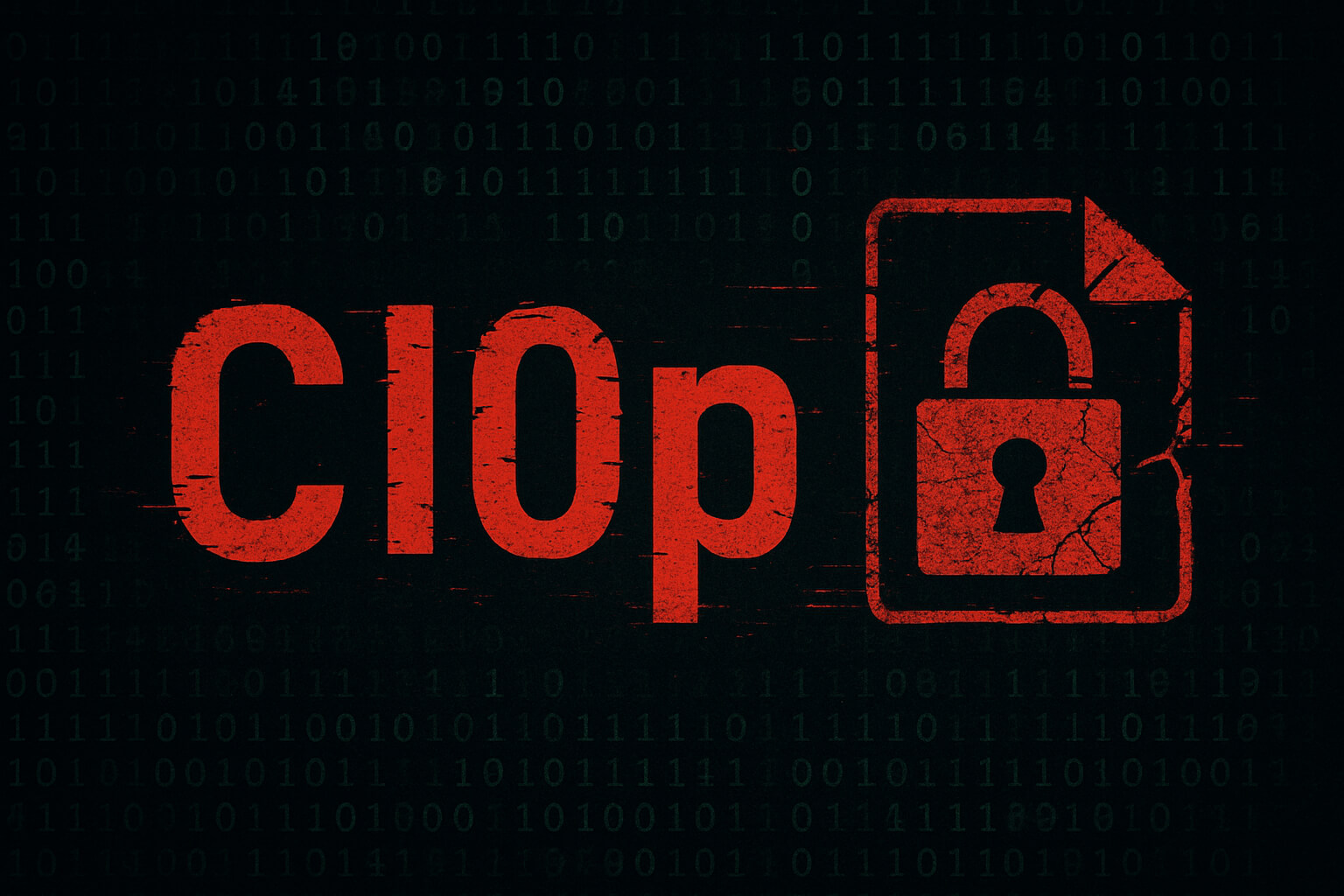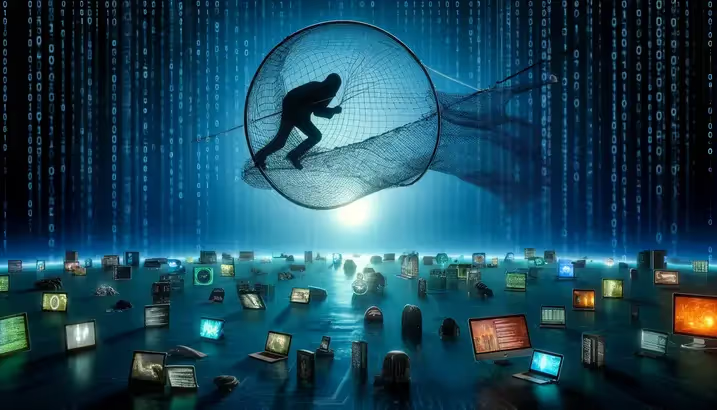Cl0p
Cl0p is one of the most disruptive ransomware groups of the past decade, known for mass exploitation of file transfer vulnerabilities, global-scale extortion campaigns, and relentless adaptation despite repeated law enforcement crackdowns.

The Origin of Cl0p
Cl0p is a financially motivated cybercriminal group first observed in 2019, operating as a ransomware variant within the broader TA505 cybercrime syndicate. The group quickly distinguished itself by adopting a double extortion model, encrypting files while also exfiltrating sensitive data for added leverage. Over time, Cl0p evolved into one of the most active and destructive ransomware-as-a-service (RaaS) operations, targeting organizations across industries worldwide.
The group is associated with Russian-speaking actors, and intelligence suggests ties to Eastern Europe. Their operations have consistently adapted to law enforcement pressure, demonstrating resilience and operational sophistication.
Countries targeted by Cl0p
Victims have been reported in North America, Europe, and Asia-Pacific. The United States, South Korea, Germany, and the United Kingdom have been among the most heavily impacted, although Cl0p maintains a global footprint.
Industries targeted by Cl0p
Cl0p has historically targeted finance, healthcare, education, government, energy, and technology. Their choice of victims emphasizes organizations with critical operations, increasing ransom pressure. Notably, they exploited software supply chain weaknesses to gain access to hundreds of enterprises simultaneously.
Cl0p's known victims
High-profile victims have included Accellion, Shell, Qualys, Flagstar Bank, and GoAnywhere MFT customers. Through mass exploitation campaigns, Cl0p managed to impact dozens of Fortune 500 companies, as well as government agencies and universities.
Cl0p's Attack Method

Cl0p is best known for gaining entry through zero-day vulnerabilities in managed file transfer systems such as Accellion FTA, GoAnywhere MFT, and MOVEit Transfer. These systems are attractive targets because they are widely used across industries, often hold sensitive data, and are directly accessible from the internet. The group has also been observed using phishing campaigns with malicious attachments to obtain valid credentials, though large-scale exploitation of enterprise software remains their primary method.

Once inside, Cl0p operators move quickly to secure privileged access. They rely on tools like Mimikatz to extract credentials and may exploit misconfigured Windows services.

Valid accounts are then used for persistence, allowing them to remain inside environments undetected while preparing the next phases of their operation. Cl0p demonstrates awareness of enterprise security tools. They attempt to disable antivirus and endpoint protection, manipulate logs, and use obfuscation techniques to conceal their activity. In more recent campaigns, encrypted exfiltration traffic was employed to avoid triggering data loss prevention or intrusion detection controls.

Harvests administrator credentials through keylogging, memory scraping, and credential dumping.

Conducts internal reconnaissance to map out systems and identify sensitive data.

With valid credentials in hand, Cl0p uses techniques such as RDP abuse and PSExec to move laterally. They target administrative shares and leverage domain accounts to spread quickly across enterprise environments. This stage is crucial for identifying sensitive data repositories before exfiltration.

Focuses heavily on identifying and exfiltrating confidential documents, intellectual property, and personal data.

The group deploys the Cl0p ransomware payload to encrypt files using a combination of AES and RSA encryption, leaving behind ransom notes with instructions for negotiation.

Transfers stolen data to external servers under group control, often before encryption.

Encryption is typically reserved for the final phase, ensuring that sensitive data has already been stolen. Victims who refuse to pay face publication on the Cl0p^_- LEAKS site, which serves as both a pressure tactic and a reputation tool for the group.

Cl0p is best known for gaining entry through zero-day vulnerabilities in managed file transfer systems such as Accellion FTA, GoAnywhere MFT, and MOVEit Transfer. These systems are attractive targets because they are widely used across industries, often hold sensitive data, and are directly accessible from the internet. The group has also been observed using phishing campaigns with malicious attachments to obtain valid credentials, though large-scale exploitation of enterprise software remains their primary method.

Once inside, Cl0p operators move quickly to secure privileged access. They rely on tools like Mimikatz to extract credentials and may exploit misconfigured Windows services.

Valid accounts are then used for persistence, allowing them to remain inside environments undetected while preparing the next phases of their operation. Cl0p demonstrates awareness of enterprise security tools. They attempt to disable antivirus and endpoint protection, manipulate logs, and use obfuscation techniques to conceal their activity. In more recent campaigns, encrypted exfiltration traffic was employed to avoid triggering data loss prevention or intrusion detection controls.

Harvests administrator credentials through keylogging, memory scraping, and credential dumping.

Conducts internal reconnaissance to map out systems and identify sensitive data.

With valid credentials in hand, Cl0p uses techniques such as RDP abuse and PSExec to move laterally. They target administrative shares and leverage domain accounts to spread quickly across enterprise environments. This stage is crucial for identifying sensitive data repositories before exfiltration.

Focuses heavily on identifying and exfiltrating confidential documents, intellectual property, and personal data.

The group deploys the Cl0p ransomware payload to encrypt files using a combination of AES and RSA encryption, leaving behind ransom notes with instructions for negotiation.

Transfers stolen data to external servers under group control, often before encryption.

Encryption is typically reserved for the final phase, ensuring that sensitive data has already been stolen. Victims who refuse to pay face publication on the Cl0p^_- LEAKS site, which serves as both a pressure tactic and a reputation tool for the group.
Cl0p's TTPs
How to detect Cl0p with Vectra AI
FAQs
When was Cl0p first identified?
Cl0p was first seen in 2019, associated with TA505.
What makes Cl0p unique compared to other ransomware groups?
They pioneered large-scale exploitation of managed file transfer solutions, enabling supply chain-style ransomware campaigns.
What encryption methods does Cl0p use?
It uses AES + RSA hybrid encryption to lock files and ensure decryption requires their private key.
How does Cl0p gain initial access?
They exploit zero-day vulnerabilities in appliances like Accellion FTA, MOVEit Transfer, and GoAnywhere MFT, as well as phishing.
What was their most impactful campaign?
The Accellion FTA campaign (2020-2021) and the MOVEit mass exploitation in 2023 were among their most damaging.
Have there been law enforcement actions against Cl0p?
Yes. In 2021 and 2023, Ukrainian law enforcement conducted raids and arrests of affiliates with Europol and Interpol support. Infrastructure seizures also disrupted operations temporarily.
How does Cl0p handle ransom negotiations?
They use anonymous communication portals, set strict deadlines, and threaten to publish sensitive data on their leak site.
Does Cl0p operate as a RaaS?
Yes. Affiliates are recruited to spread the malware, with profit-sharing agreements in place.
Can the Vectra AI Platform detect Cl0p activity?
Yes. By analyzing lateral movement, unusual credential use, and data exfiltration patterns, the Vectra AI Platform can surface early indicators before encryption begins.
What is Cl0p’s current status as of October 2, 2025?
Cl0p remains active despite repeated disruptions. Their campaigns have shifted toward zero-day exploitation of enterprise file transfer tools, maintaining their reputation as a high-impact ransomware operator.